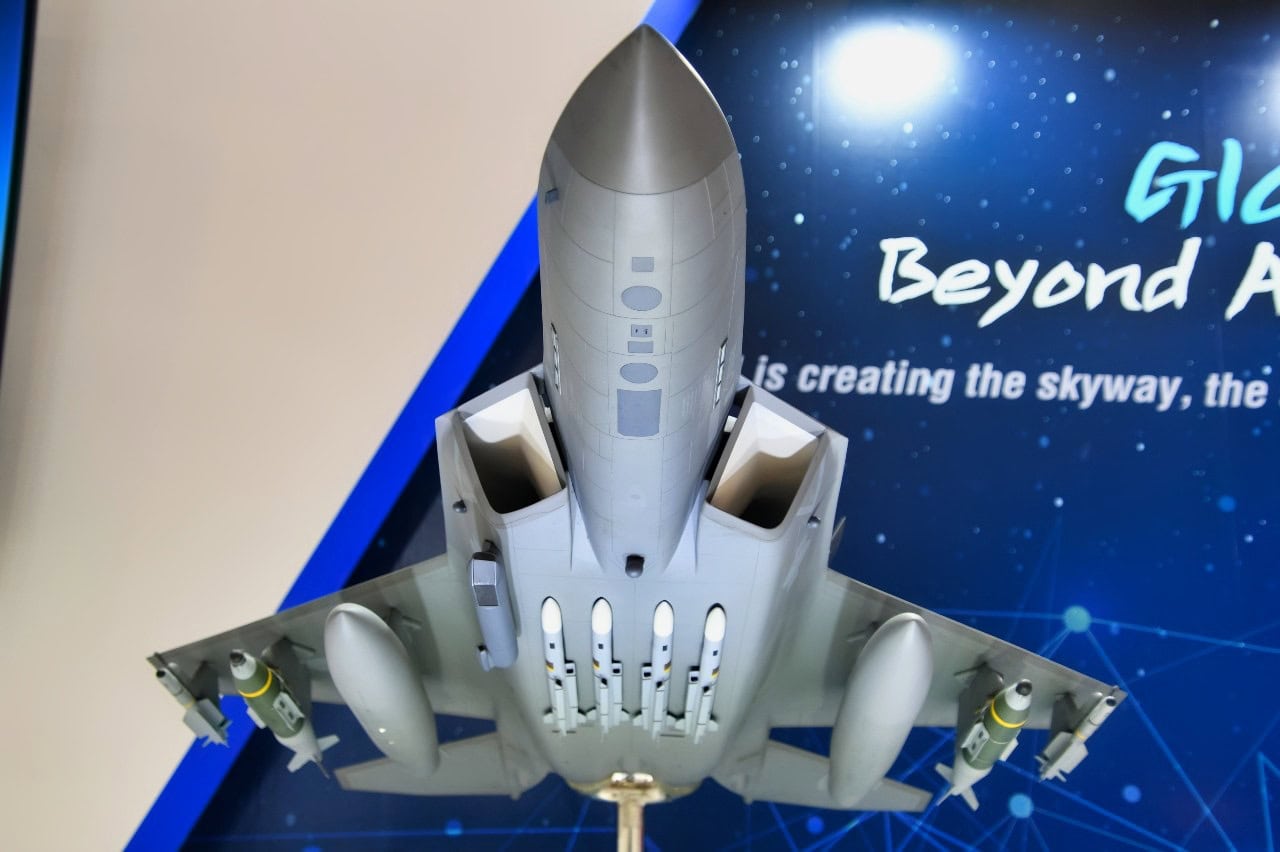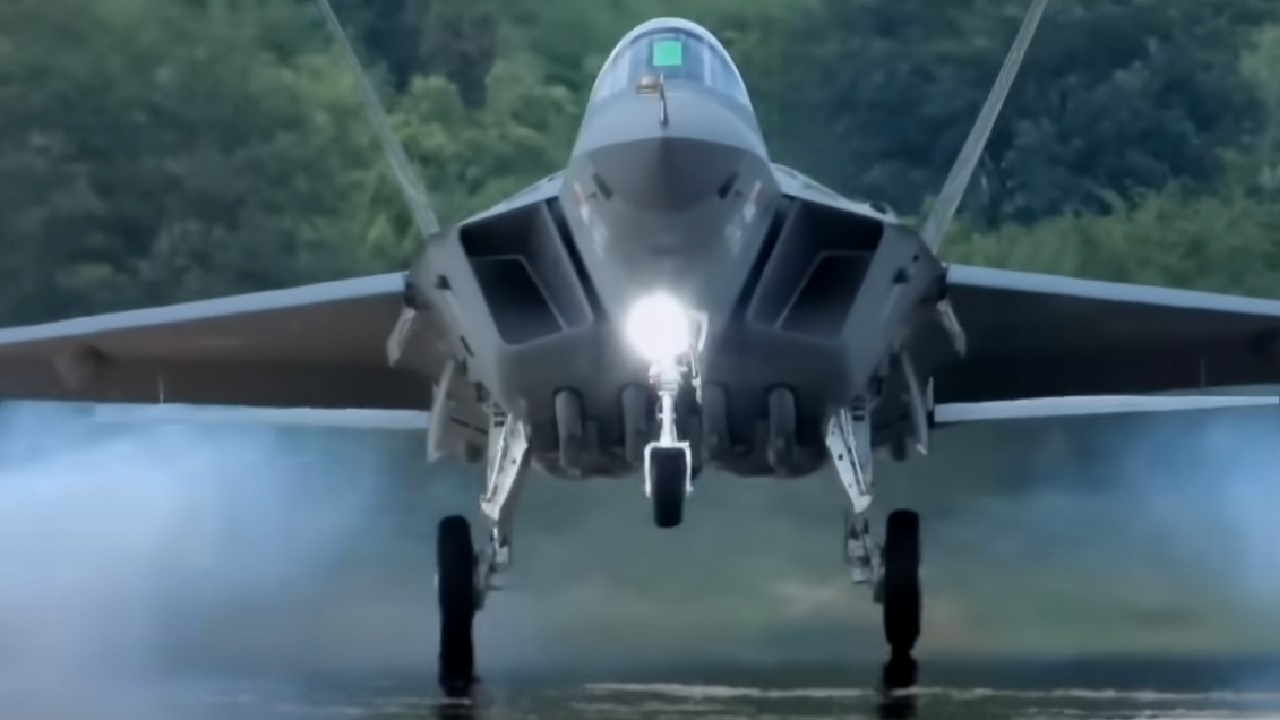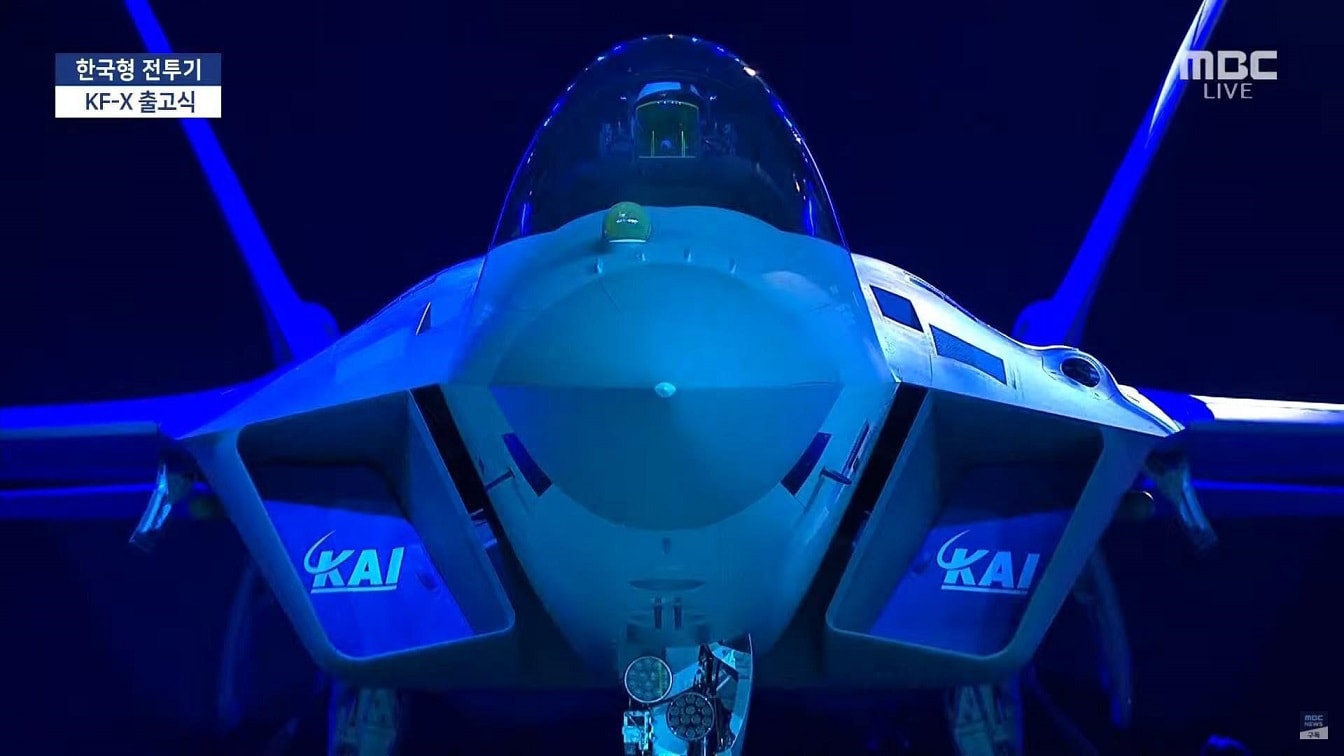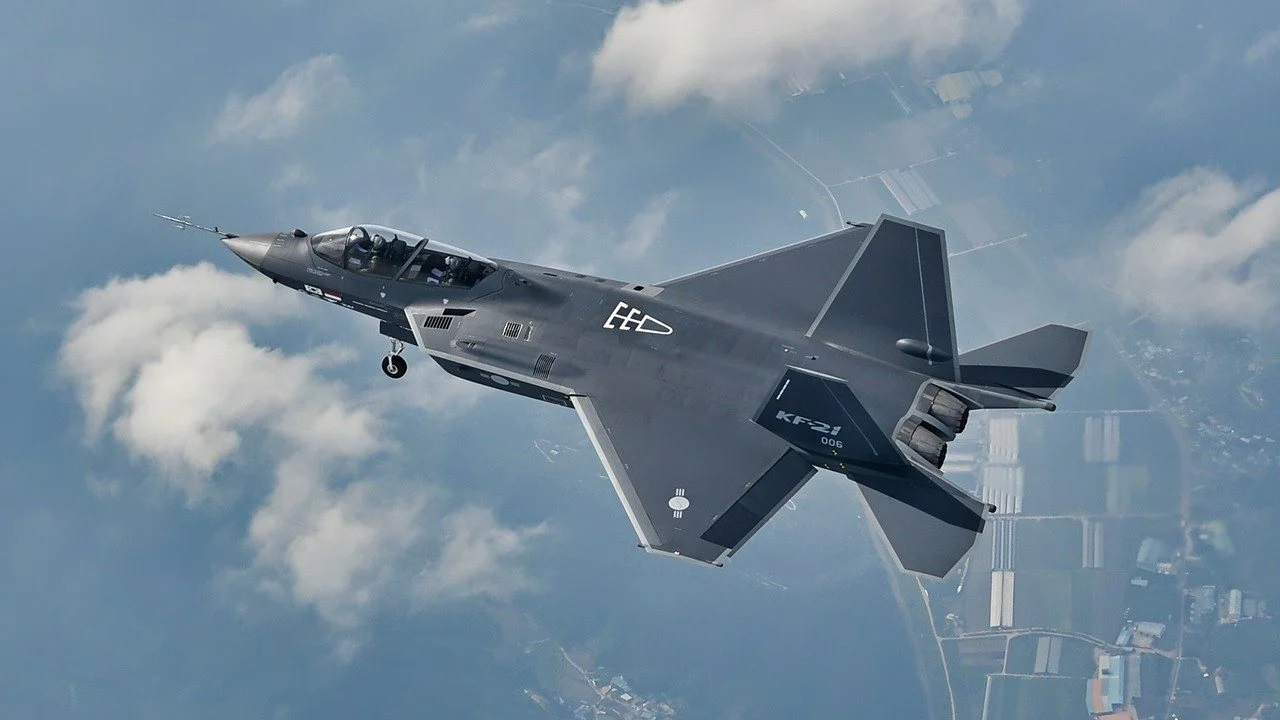Key Points and Summary: South Korea is rapidly advancing with its KF-21 Boromae fighter jet, a 4.5-generation aircraft designed to replace older U.S.-made fighters and boost local defense industry capabilities.
-Recently, the KF-21 underwent successful tests, including a critical flight piloted by ROK Air Force General Lee Young-su to validate maneuverability and avionics integration alongside KF-16s.

South Korea’s KF-21 Boramae is entering mass production, positioning KAI as a global defense leader. With Poland and other buyers interested, can it challenge the F-35 in export markets?
What Makes the KF-21 Special?
Following in the footsteps of its successful T-50/FA-50 light fighter, Korean Aerospace Industries (KAI) has been developing and testing a new fighter aircraft, designated the KF-21. The aircraft is described as a 4.5-generation supersonic fighter jet.
It first began development as part of the Korean Fighter eXperimental (KF-X) medium-class fighter project.
The objective of that program from the very beginning was to give South Korea the capability to develop and manufacture its own fighter aircraft. These new platforms would, as a first step, replace older-generation U.S.-made aircraft such as the F-4 Phantom II and the locally improved KF-5 Gaegoho.
The drive to develop the Boromae pairs KAI with the Korean Agency for Defense Development, but the aircraft draws on cooperation with more than 225 other Korean companies, 10 South Korean government-funded research institutes, and 15 universities.
A cornucopia of international partners—many of whom also contributed to the FA-50—include Indonesia’s PTDI (now Indonesia Aerospace), Eurofighter Typhoon Limited, and Lockheed Martin.
There are also numerous parts suppliers, such as GE (the engine supplier), Texstars (canopy design), Martin-Baker (ejection seat), Cobham, Héroux-Devtek, and Leonardo.
KF-21: The Next Major Step
On Feb. 19, KAI test aircraft KF-21-004, one of the two twin-seat prototypes of the Boramae, conducted a test flight from Sacheon Air Base in South Korea. The ROK Air Force’s Chief of Staff, General Lee Young-su, flew in the student-pilot cockpit in what was the first flight of the aircraft that involved a non-test pilot at the controls.
This particular test flight was conducted to validate the aircraft’s maneuverability characteristics, and to generate an overall performance evaluation. The flight was reported to have involved “specific assessments of control characteristics and avionics accuracy.”
During this test flight, General Lee and the KF-21 test pilot, Major Woo Hong-gyun, were able to validate the aircraft’s control authority, overall stability, and avionics systems. The flight included test maneuvers conducted over South Korea’s southern coast at airspeeds that exceeded 1,000 kilometers per hour, at an altitude of approximately 4,500 meters.
Validation Well Underway
The test also saw the KF-21 fly in formation alongside locally assembled models of the KF-16. Operations in conjunction with the ROK-built variant of the American fighter were demonstrated to confirm the ability of the KF-21 to conduct tactical operations with aircraft already in the South Korean air force’s inventory.
In contrast with the FA-50’s latest variant, which uses the U.S.-built RTX PhantomStrike radar, the KF-21 is equipped with a domestically produced active electronically scanned array (AESA) radar developed by the ROK Agency for Defense Development and manufactured by Hanwha Systems. The interoperability of this AESA radar with the KF-16’s radar was also tested during the test flight.
The KF-21’s design does not feature a stealthy skin like the F-35, despite its resemblance to that U.S. aircraft. The KF-21 does, however, feature a low-observable/low radar cross-section (RCS) shape. Its other signature-mitigating features include flush antennas, an S-Duct, a flat fuselage, and a semi-buried/nested weapons bay.

KF-21 screenshot from first flight. Image Credit: YouTube Screenshot.
Radar Absorbent Materials are used on the canopy, wings, and tail. Radar Absorbent Structure is then used in construction of the ducts and flaps. The radome is coated with frequency-selective surface technology that is “tuned” to specific radar bandwidths.
Eventually, the KF-21 will replace several relatively recent aircraft that remain in the ROK Air Force’s service for now. These are the most advanced variants of the locally built F-16s, the KF-16U. They are supposed to be retired by 2039, while the F-15K will be withdrawn in 2049.
Once this transition is complete, the ROK Air Force will be nearly independent from the U.S., which has been its major supplier for more than 50 years. Thus the KF-21 seems destined to displace American defense firms in an increasing number of markets.
Which market segments will be left open for U.S. defense manufacturing giants such as Lockheed Martin and Boeing is a question that will have to be answered at some point.

KF-21 Fighter. Image Credit: Screenshot.
About the Author:
Reuben F. Johnson is a survivor of the February 2022 Russian invasion of Ukraine and is now an Expert on Foreign Military Affairs with the Fundacja im. Kazimierza Pułaskiego in Warsaw. He has been a consultant to the Pentagon, several NATO governments and the Australian government in the fields of defense technology and weapon systems design. Over the past 30 years he has resided in and reported from Russia, Ukraine, Poland, Brazil, the People’s Republic of China and Australia.

